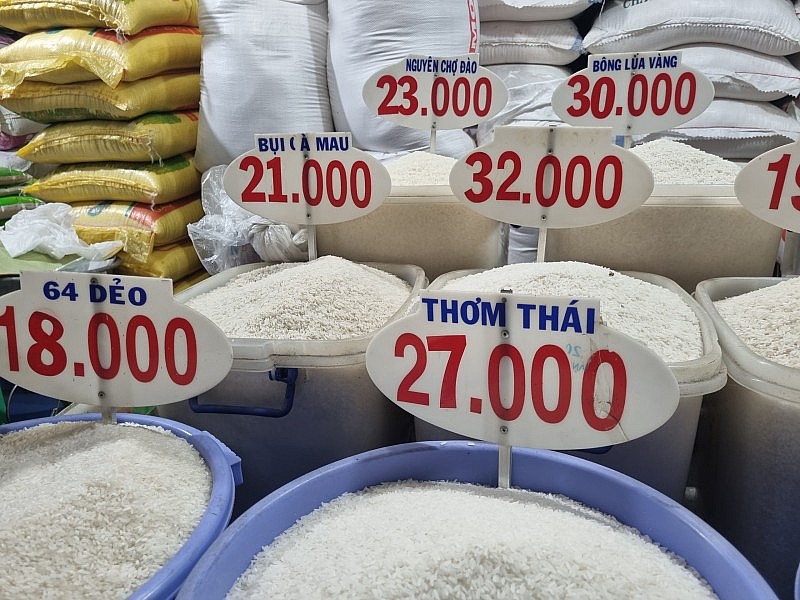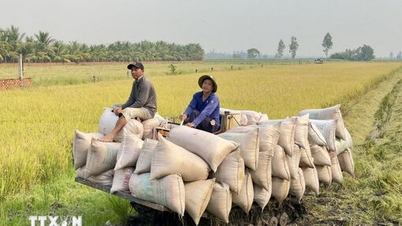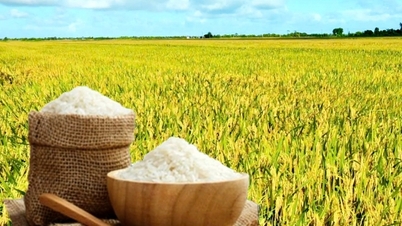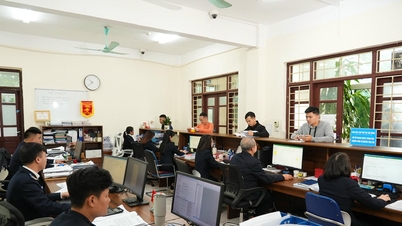According to rice exporters, in the first weeks of 2024, world rice prices will continue to remain high, and Pakistani rice prices have even increased sharply in the past two weeks.
Specifically, according to Oryza data, the price of 5% broken rice from Pakistan increased from 593 USD/ton at the end of 2023 to 625 USD/ton (up 32 USD) by the trading session on January 19; similarly, the price of 25% broken rice of this country also increased by 49 USD, to 562 USD/ton compared to the end of 2023.
 |
| Rice prices remain high due to strong demand. |
Other suppliers including Vietnam and Thailand, although recording a slight decrease compared to the end of 2023, still maintain high prices, in which Vietnam's 5% broken rice currently maintains a price of 652 USD/ton while Thai rice of the same quality is 648 USD/ton.
According to the Vietnam Food Association (VFA), in the first 3 weeks of January 2024, world rice prices fluctuated in opposite directions, in which Vietnamese rice tended to decrease in the 25% broken segment, while rice from countries such as Pakistan and Thailand continuously increased. However, in many forecasts made by VFA, VFA leaders all stated that rice prices in 2024 will hardly decrease but will remain around the price mark of over 600 USD/ton.
Not only VFA but also the Thai Rice Exporters Association has a similar forecast. According to the Thai Rice Exporters Association, as long as India maintains its ban on white rice exports, Thai rice prices will remain relatively high in the first half of this year. “Global prices may fluctuate around $600 per ton, the highest level in more than a decade, as demand remains strong from many countries,” said Chookiat Ophaswongse, Honorary President of the Thai Rice Exporters Association.
The above common view among rice exporters is supported by the factor of limited supply, while demand from many countries is at a high level. Accordingly, the world's major supplier, India, continues to maintain its policy of restricting rice exports, even tightening these policies to control domestic food prices.
Regarding demand, according to experts, countries including the Philippines, Indonesia, Malaysia... continue to have large import needs. In many recent forecasts, rice exporters predict that the Philippines will import 3.5-4 million tons this year. In Indonesia, on January 11, the State Logistics Agency (Bulog) of Indonesia said that the Government of this country has agreed to assign Bulog to import 2 million tons of rice this year.
Previously, in 2023, Indonesia imported 3 million tons of rice, a significant increase of 613% compared to the previous year, according to data released recently by the Central Statistics Agency (BPS). BPS data shows that rice imports have increased steadily over the years, with 444,510 tons in 2019, 356,290 tons in 2020, 407,740 tons in 2021 and 429,210 tons in 2022. The majority of Indonesia's rice imports in 2023 are from Thailand and Vietnam, contributing 1.38 million tons and 1.14 million tons, respectively. In addition, rice is imported from Pakistan (309,000 tons) and Myanmar (141,000 tons).
In addition to the above factors, the recent insecurity situation in the Red Sea region is also expected to have an impact on global rice prices.
In fact, freight rates across the Red Sea have been recorded to have more than doubled compared to December 2023, with the Asia-Europe trade route being the most heavily affected. According to VFA, there has recently been information about some countries such as India and Pakistan being affected by the Red Sea region. In particular, for Pakistan, container rates have increased sharply and shipping times to Africa and Europe will be longer due to route changes. As for India, the country's Ministry of Commerce recently said that rice exports have begun to be affected by the ongoing armed conflict in the Red Sea region. However, details of the extent of the impact have not been clearly announced. The Ministry of Commerce is also concerned that if tensions persist, basmati rice exports to Egypt and Europe will be affected.
However, one point worth noting, according to rice exporting enterprises, is that due to the huge demand from buyers and the losses caused by increased shipping costs, the seller is still the one who decides on the price.
Source link




![[Photo] Urgently help people soon have a place to live and stabilize their lives](/_next/image?url=https%3A%2F%2Fvphoto.vietnam.vn%2Fthumb%2F1200x675%2Fvietnam%2Fresource%2FIMAGE%2F2025%2F12%2F09%2F1765248230297_c-jpg.webp&w=3840&q=75)












































































![[Photo] General Secretary To Lam works with the Standing Committees of the 14th Party Congress Subcommittees](https://vphoto.vietnam.vn/thumb/402x226/vietnam/resource/IMAGE/2025/12/09/1765265023554_image.jpeg)































Comment (0)